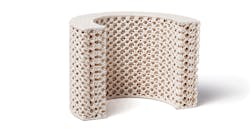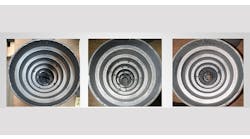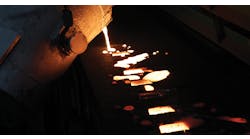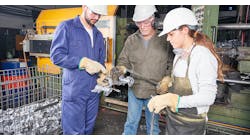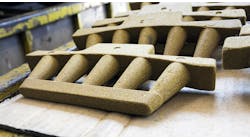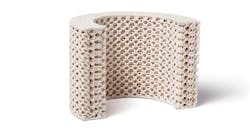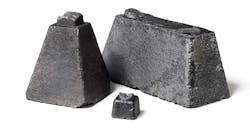Latest from Ask the Expert
Optimize Solidification and Enhance Casting Quality
Q: We have quality-control issues with some castings that feature thin sections. We pour gray iron castings ranging from 200 to 300 lbs., and some of these include thin-section details. In some instances, we discover that the thin sections include undesired graphite structures — types D and E — and some carbides. Is there a recommended process or additive product that would help us to improve the graphite structure to Type A, and achieve a strong inoculation effect that would prevent those carbides?
A: You will be glad to learn that there is such a method. Types D and E graphite and carbides in thin sections of gray iron castings is an issue that many foundries have to deal with. Both of these undesired structures come from the high solidification rate of the molten metal. This means that the metal solidifies too quickly, and as a consequence it is not able to establish the desired structure (i.e., Type A, and with no carbides.)
The product that addresses this issue is known as an in-mold inoculant, and the process for applying it involves anchoring a solid, FeSi inoculant alloy structure in the sand mold. This method of inoculation has various benefits: it will promote a Type A graphite structure; there will be no inoculation fade; and the cast part will exhibit improved mechanical properties.
Q: Is there a limit to the size of castings that can be improved with the in-mold inoculation method? Our problem castings are in the 200- to 300-lbs. range, but we would like to adopt methods or practices that can be applied to all of our products, both heavy and light castings.
A: The in-mold inoculant products we recommend are available in various sizes, so you can apply them to any type of castings you are pouring. Depending on the pour weight and the pour time, we can then determine the appropriate size inoculant for your mold.
Q: How about in-mold inoculation method for ductile iron castings? Is it possible to apply the gray-iron in-mold inoculation practice to these products, too?
A: Absolutely! We have different inoculant products that can be used for different applications. OPTIGRAN is a product that is used for our gray iron; GERMALLOY is the product that is used for ductile iron. Both are in-mold inoculants with different compositions to fit the gray and ductile iron practices accordingly.
Additionally, we have an alternative to the GERMALLOY product for ductile iron castings called SMW Inserts, which is used mostly to prevent what is called chunky graphite in heavy-section castings. The addition of bismuth (Bi) in conjunction with cerium (Ce) helps to prevent this defect in ductile iron castings with heavy sections.
Q: How can we introduce this practice to our process? Describe how in-mold inoculation would be accomplished?
A: It is preferable for the in-mold inoculant to be anchored in place before the molten metal fills the mold. It is possible to enhance the mold pattern to be able to introduce the in-mold inoculant product as the pattern is being filled with mold. In this way, you can have the mold anchored with the inoculant.
If that is not possible, then it is suggested to have a pouring basin on top of the mold and to anchor the product to the pouring basin. Then, as the molten metal is poured into the basin, the melt can be inoculated and poured immediately into the mold.
Q: Are there additional benefits to in-mold inoculation?
A: Other than the improvements described above, the in-mold inoculation method also helps to reduce the degree of segregation in the casting. Also, it is advantageous to the riserless casting process, promotes higher nodule counts in ductile iron castings, and it dissolves continuously during the pouring process, giving uniform and controlled inoculation.
Join the Conversation. Email Your Questions for ASK Chemicals
Share your insights, opinions, and elaborate on the questions and the experts' answer(s). You must be logged in to the website in order to post your comments.
